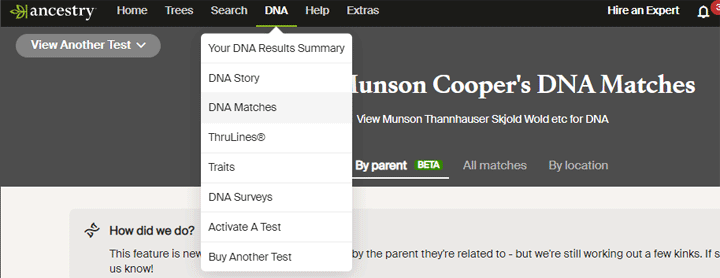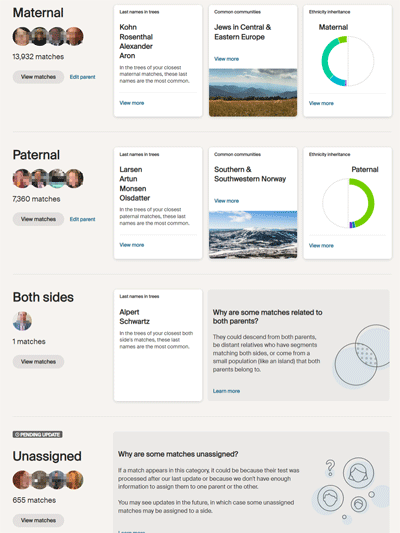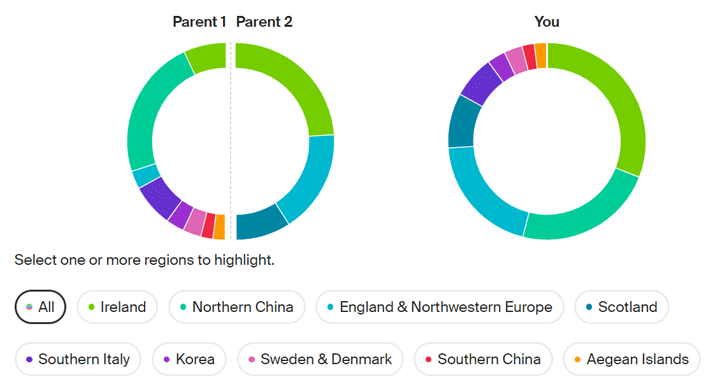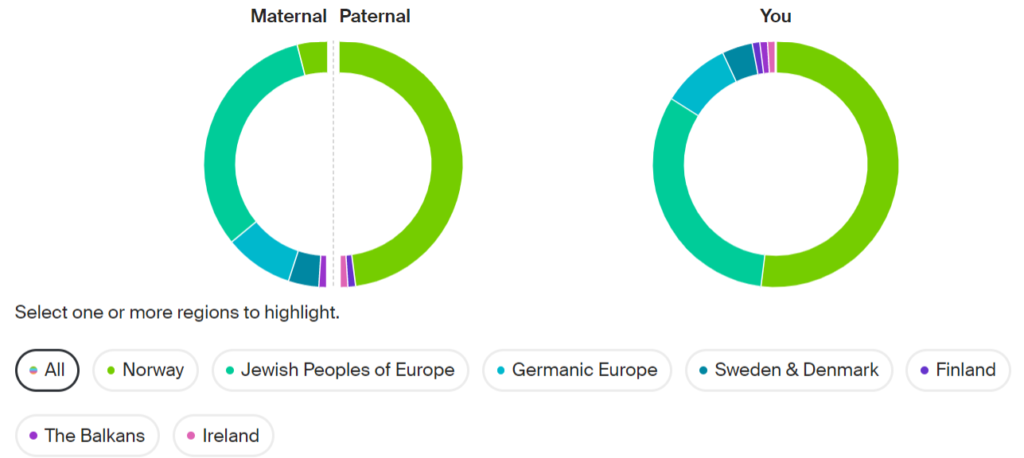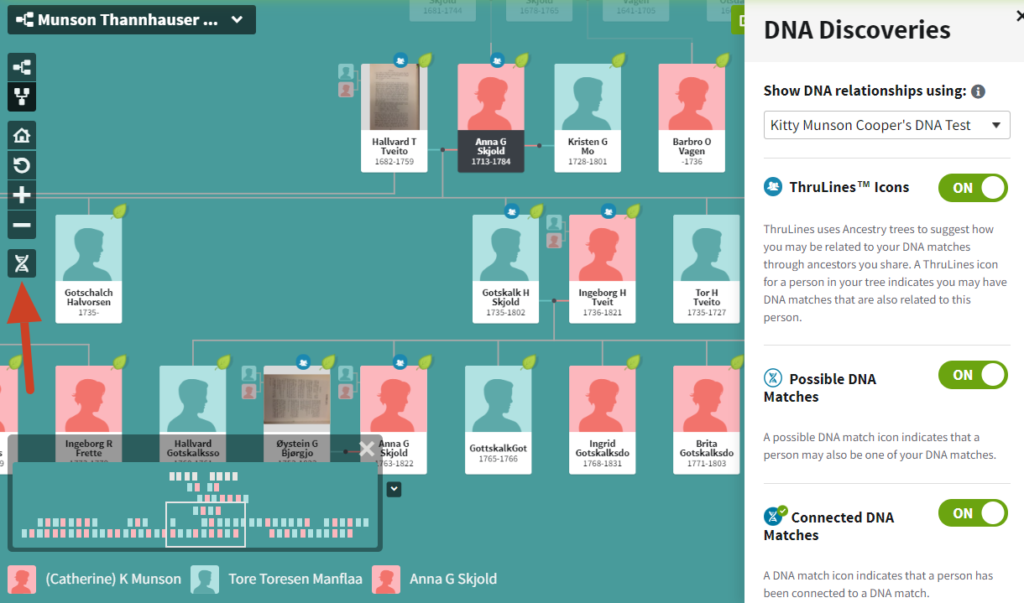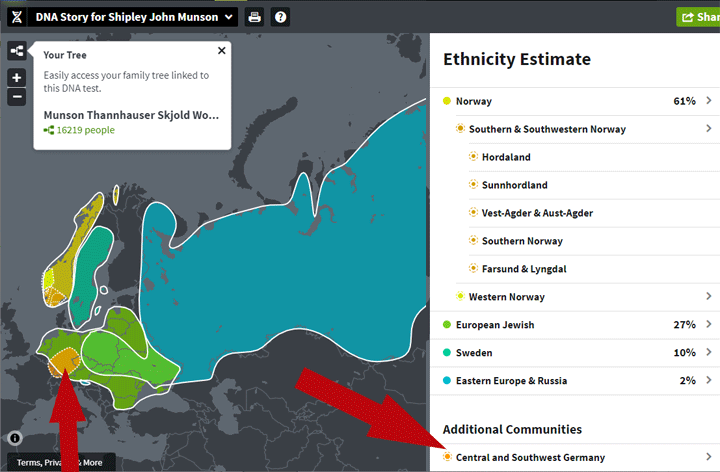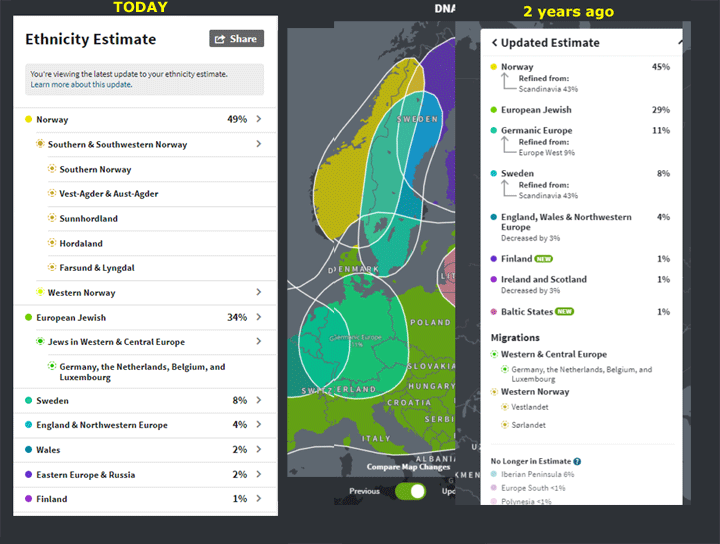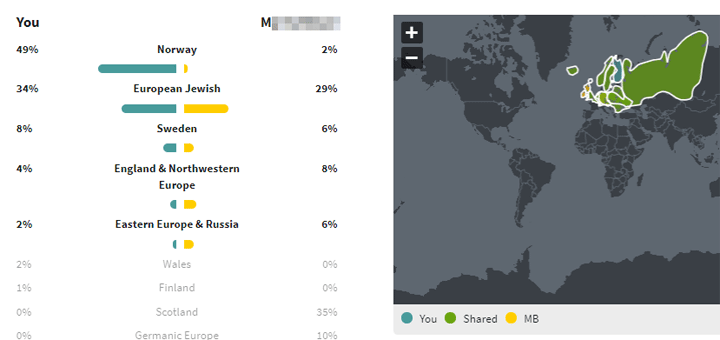Even if you haven’t been carefully assigning sides and relationships to your DNA matches, Ancestry will now try to assign sides for you! As with the recent Sideview feature (click here for that blog post), it uses Parent 1 and Parent 2. However you can use the blue Edit Parent link to change them to Paternal and Maternal, if you can figure out from the matches or communities which is which.
If you click on DNA Matches in the DNA menu as shown above you go to a new page like the one for my matches that I show here (click it for a larger version). It separates your matches into parent 1 and parent 2 (or maternal and paternal if you have assigned those) plus Both sides and Unassigned. Newer matches since April will always be unassigned, as well as ones it cannot figure out (click here for Ancestry’s explanation). You can see more surnames or communities by clicking on the blue View more in each panel. Clicking on All matches in the top menu bar will take you to the usual match page but now each match will have a side, both sides or unassigned listed underneath their relationship in the list. There are a few examples below. You can click on By parent to get back to this interesting new page. Clicking View matches in the first box for Parent 1 or any designation will show you your match list with matches from just that side.
I had delayed blogging about this fun feature because it was initially buggy and they took it down briefly. Also it is still in Beta test, so perhaps not everyone has it yet. Sadly there are still a few problems, so take your results with a grain of salt. Not surprisingly, people from endogamous populations are mainly out of luck with this new tool.
